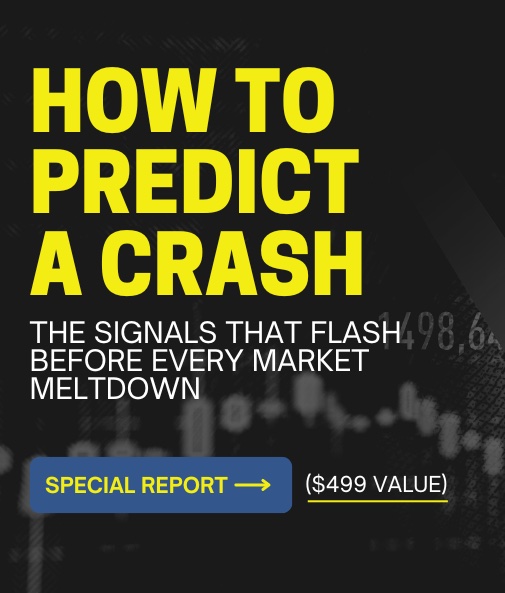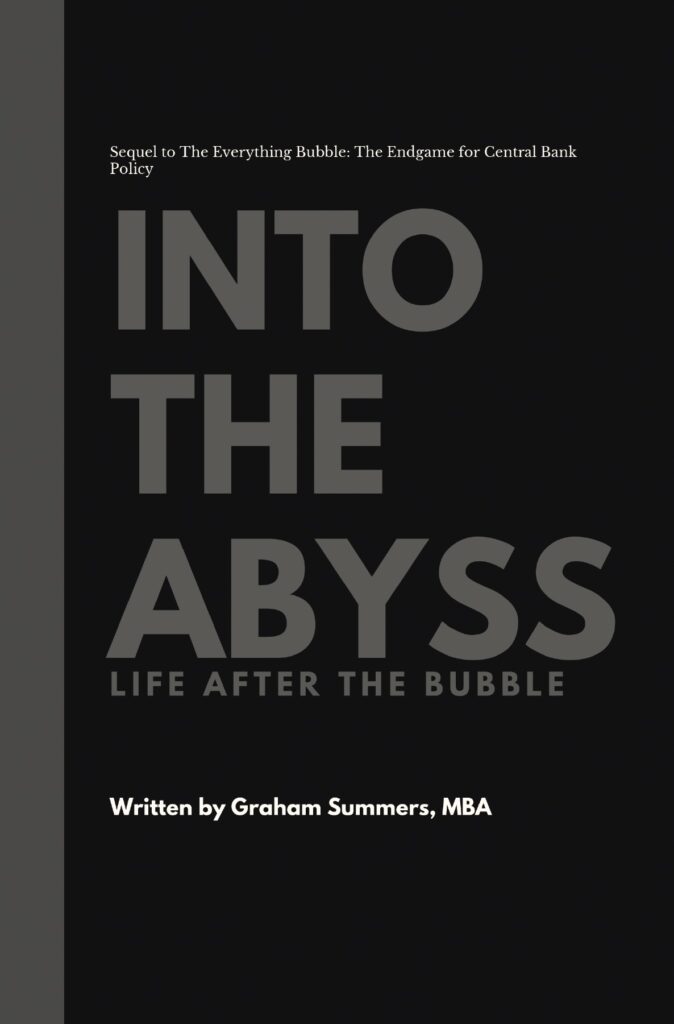THE ONLY REPORT INVESTORS NEED TO KNOW WHEN TO GET OUT OF STOCKS
LISTEN TO OUR PODCAST.
GRAHAM'S NEW BOOK WAS THE #1 NEW RELEASE IN FOUR CATEGORIES ON AMAZON
HOT TOPICS.
- 2008
- bail-ins
- bear market
- Bernanke
- big banks
- bond bubble
- bonds
- BOVESPA
- Carry Tax
- cash ban
- central banks
- China
- collapse
- contraction
- crash
- crisis
- debt
- debt crisis
- debt implosion
- deflation
- Derivatives
- economic collapse
- Federal Reserve
- inflation
- interest rates
- investing
- Jp MOrgan
- meltdown
- NIRP
- Operation Twist
- PboC
- Private wealth
- QE
- recession
- S&P 500
- slowdown
- stock market crash
- stocks
- TBTFs
- the Fed
- the market
- US Dollar
- War on cash
- Yellen
- ZIRP
Tag Archives: crisis
Is the Bull Market Over? These Charts Say So
For weeks we have been warning not to trust the bounce in stocks. We were worried that a Bear Market had begun. The most critical item we were concerned with was the fact that the S&P 500, despite its massive … Continue reading
Posted in stock collapse?
Tagged bear market, collapse, crisis, stock market crash
Comments Off on Is the Bull Market Over? These Charts Say So
Six Horrifying Facts of the Financial System Today
For six years, the world has operated under a complete delusion that Central Banks somehow fixed the 2008 Crisis. All of the arguments claiming this defied common sense. A 5th grader would tell you that you cannot solve a debt … Continue reading
Posted in stock collapse?
Tagged crisis, financial, stock market crash
Comments Off on Six Horrifying Facts of the Financial System Today
Bail-Ins and Frozen Accounts Are Coming to a Country Near You!
In the last 24 months, Canada, Cyprus, New Zealand, the US, the UK, and now Germany have all implemented legislation that would allow them to first FREEZE and then SEIZE bank assets during the next crisis. These moves will be … Continue reading
Posted in It's a Bull Market
Tagged bail-ins, bank holidays, crisis, debt crisis, Europe Implosion, FDIC, regulators, SEC, TBTFs
Comments Off on Bail-Ins and Frozen Accounts Are Coming to a Country Near You!
Recession Watch: We’re Back in One
The Fed has now kept interest rates at zero for 81 months. This is the longest period in the history of the Fed’s existence, lasting longer than even the 1938-1942 period of ZIRP. And the US economy is moving back … Continue reading
Fed Experts Call for NIRP… is a Physical Cash Ban Next?
More and more “experts” are calling for Negative Interest Rate Policy or NIRP. The US Federal Reserve is obsessed with market reactions to its policies. Because of this, anytime the Fed plans to announce a major change in policy, it … Continue reading
Posted in It's a Bull Market
Tagged bonds, crisis, debt crisis, Federal Reserve, the Fed, War on cash
Comments Off on Fed Experts Call for NIRP… is a Physical Cash Ban Next?
The Doors Close on This in Less Than 48 Hours
Dear Investor The markets are collapsing just as I’ve been predicting for weeks. And Private Wealth Advisory subscribers couldn’t be happier… We’ve just locked in two more winners, bringing our winning streak to 35 straight winning trades. And all told … Continue reading
Posted in It's a Bull Market
Tagged big gains, crisis, market meltdown, stock investing
Comments Off on The Doors Close on This in Less Than 48 Hours
The Market Has Run Out of Props
The stock market is rapidly running out of props. First off, corporate sales and profits are rolling over. As Charlie Bilello recently noted, we’ve had two straight quarters of Year over Years drops in corporate revenues. Moreover, corporate profits are … Continue reading
Posted in It's a Bull Market
Tagged bear market, collapse, crisis, Federal Reserve, interest rates, market breakdown, profits, recession
Comments Off on The Market Has Run Out of Props
Why What’s About to Begin Will Dwarf 2008
Earlier this week I outlined how the next Crash will play out. Today we’ll assess why this Crisis will be worse than the 2008 Crisis. By way of explanation, let’s consider how the current monetary system works… The current global … Continue reading
Posted in It's a Bull Market
Tagged 2008, bonds, crisis, debt crisis, emerging market meltdown, implosion, interest rates, the Fed, US Dollar
Comments Off on Why What’s About to Begin Will Dwarf 2008
These Two Assets Show Us a Crash is Coming
If the foundation of the financial system is debt… and that debt is backstopped by assets that the Big Banks can value well above their true values (remember, the banks want their collateral to maintain or increase in value)… then … Continue reading
Posted in It's a Bull Market
Tagged 2008, China, Coal, coal stocks, crisis, debt implosion, deflation, economic collapse, energy stocks, Oil, price discovery, the Fed
Comments Off on These Two Assets Show Us a Crash is Coming
Three Reasons the Fed Cannot Let Rates Normalize
Analysts and commentators remain hung up on whether or not the Fed will raise rates next week. Certain Fed officials have been stating that the Fed should commence tightening. However, with China’s bubble collapsing, dragging down the Emerging Markets, there … Continue reading
Posted in It's a Bull Market
Tagged bond bubble, carry trade, crisis, debt, Derivatives, implode, the Fed, Yellen
Comments Off on Three Reasons the Fed Cannot Let Rates Normalize




